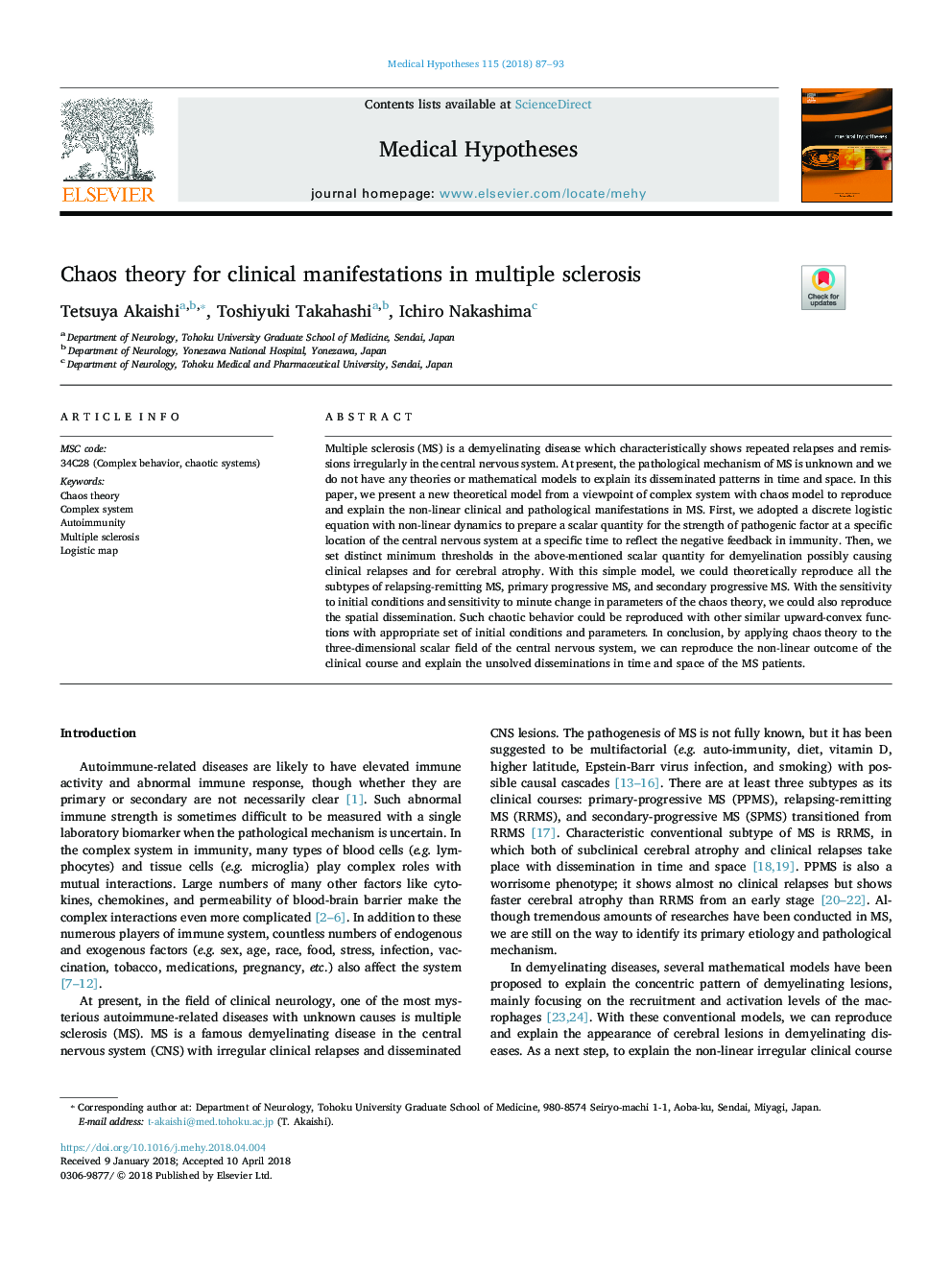| Article ID | Journal | Published Year | Pages | File Type |
|---|---|---|---|---|
| 8515708 | Medical Hypotheses | 2018 | 7 Pages |
Abstract
Multiple sclerosis (MS) is a demyelinating disease which characteristically shows repeated relapses and remissions irregularly in the central nervous system. At present, the pathological mechanism of MS is unknown and we do not have any theories or mathematical models to explain its disseminated patterns in time and space. In this paper, we present a new theoretical model from a viewpoint of complex system with chaos model to reproduce and explain the non-linear clinical and pathological manifestations in MS. First, we adopted a discrete logistic equation with non-linear dynamics to prepare a scalar quantity for the strength of pathogenic factor at a specific location of the central nervous system at a specific time to reflect the negative feedback in immunity. Then, we set distinct minimum thresholds in the above-mentioned scalar quantity for demyelination possibly causing clinical relapses and for cerebral atrophy. With this simple model, we could theoretically reproduce all the subtypes of relapsing-remitting MS, primary progressive MS, and secondary progressive MS. With the sensitivity to initial conditions and sensitivity to minute change in parameters of the chaos theory, we could also reproduce the spatial dissemination. Such chaotic behavior could be reproduced with other similar upward-convex functions with appropriate set of initial conditions and parameters. In conclusion, by applying chaos theory to the three-dimensional scalar field of the central nervous system, we can reproduce the non-linear outcome of the clinical course and explain the unsolved disseminations in time and space of the MS patients.
Related Topics
Life Sciences
Biochemistry, Genetics and Molecular Biology
Developmental Biology
Authors
Tetsuya Akaishi, Toshiyuki Takahashi, Ichiro Nakashima,
